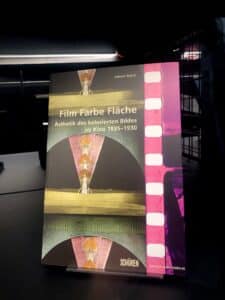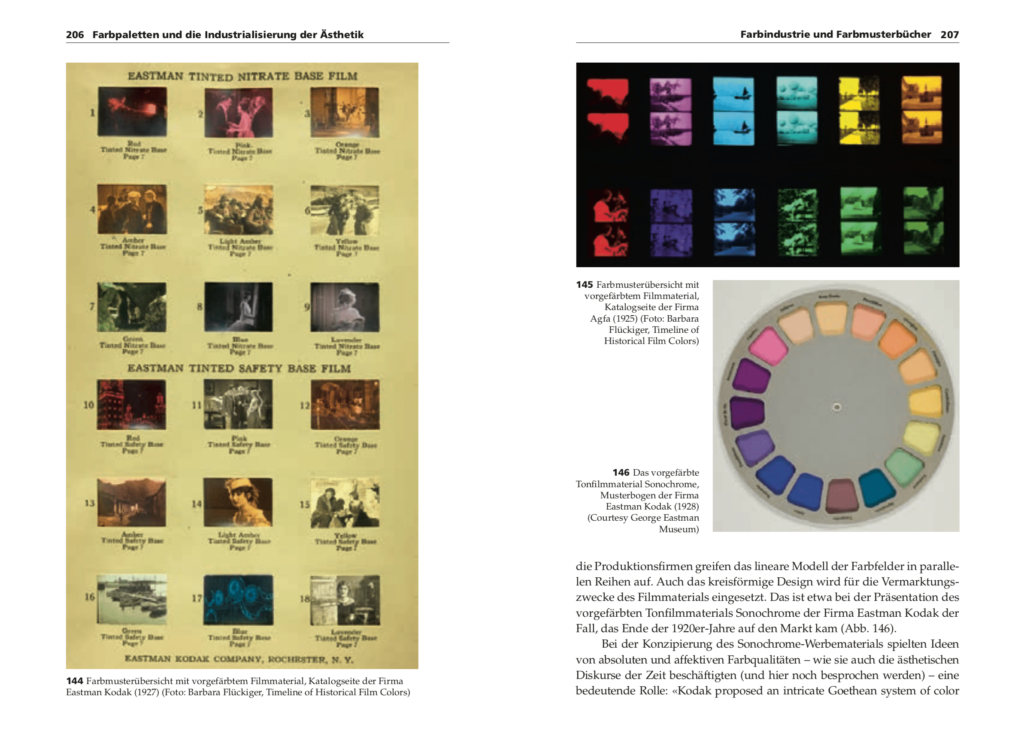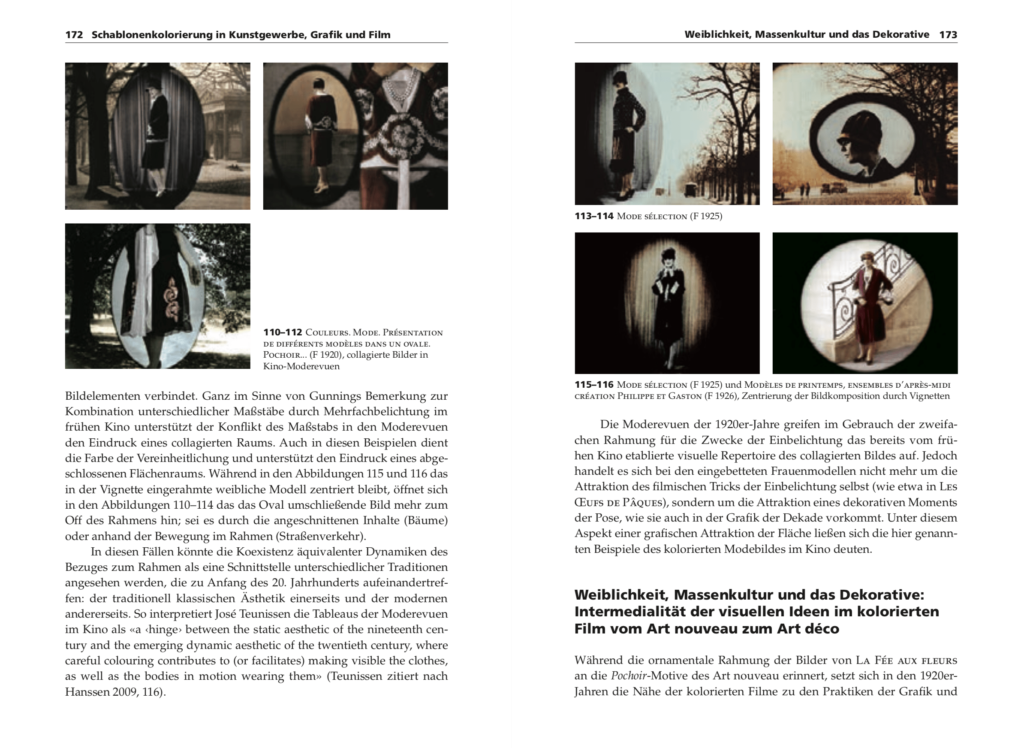(Film Color Surface: The Aesthetics of the Painted Image in Cinema, 1895–1930)



Subsequent colorization of black-and-white material was a common practice during the silent film era. The films were hand- or stencil-colored, tinted, and toned. The materiality of the applied color, often emphatically displayed, was in tension with the photographic image and created a specific dynamic between the impressions of flatness and plasticity, respectively. Thus, in early silent films, the applied color became an almost auto-thematic or self-reflexive example of what image theorists have referred to as the dual character of the image, that is, the oscillation between the perception of the image content, on the one hand, and the materiality of the color, on the other, between flatness and depth. In this way, early film color outlined what would later become a cornerstone of the chromatic avantgarde’s argument about media specificity – autonomous color.
Colorization was particularly effective in serpentine dance films, in the ornamental motifs of the féeries, in trick films, and in fashion revues. In this respect, the color application techniques of film show many parallels to other visual color media of the period (such as fashion illustration). Early colorized films also exhibit their proximity to industrial aesthetics, especially to the visual form of commercial color palettes. Thus, from an intermedial perspective, the attraction and conspicuous materiality of color function as a convergence point of chromatic modernism and the popular visual culture of the early 20th century.
Link to the open access book publication:
https://www.schueren-verlag.de/?task=openaccess.download&file=9783741003431.pdf
Blog entry: new book on early applied colors
https://blog.filmcolors.org/2021/05/02/rakin-early-applied-colors/